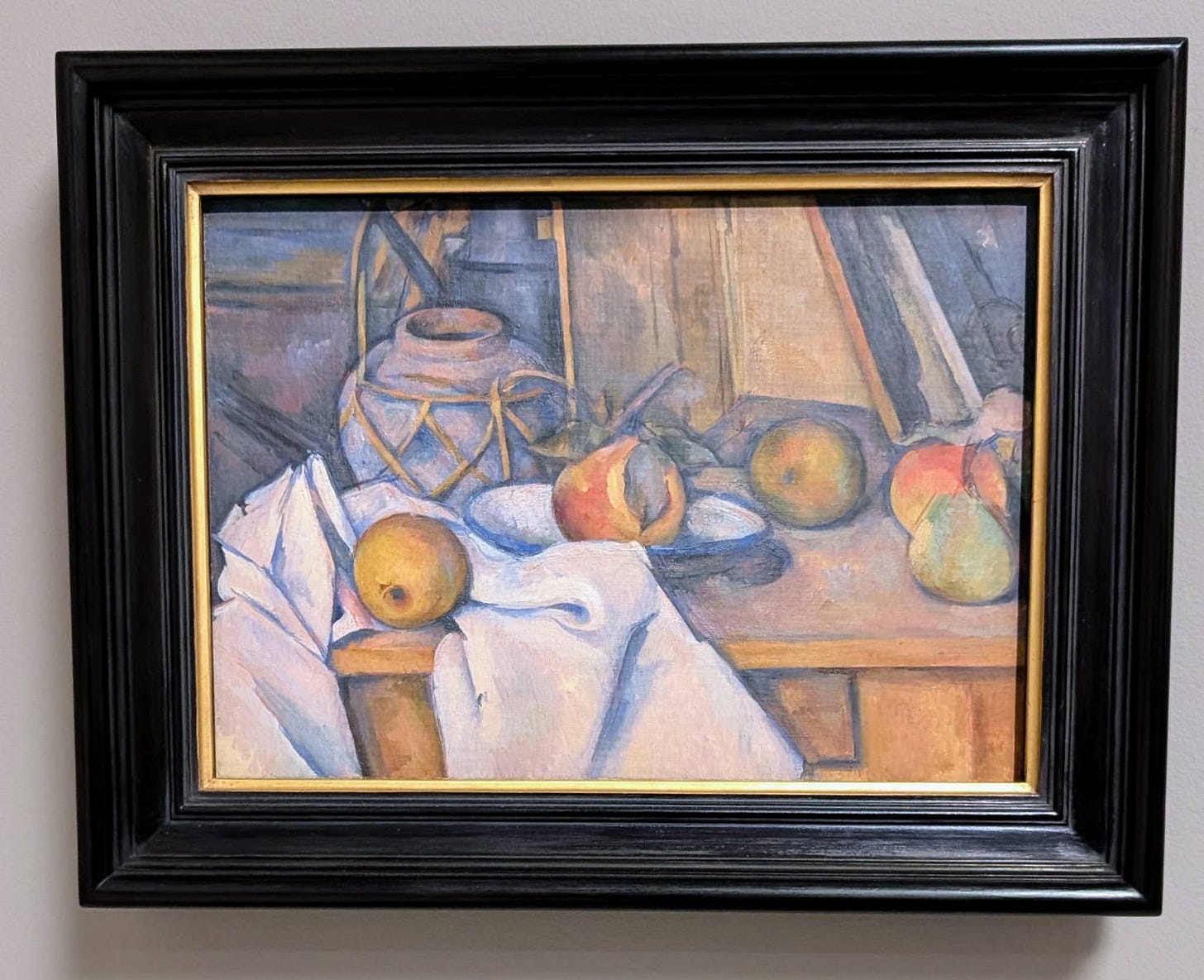Cezanne is the Rule Breaker You Need
And a stroll through Aix-en-Provence wouldn't hurt, either.
Who among us didn’t have a taped up poster of Monet’s water lilies in their college dorm room? Pretty colors, blurry as an aesthetic choice, easily consumed with just a tinge of rebellion, Monet fit those amorphous striving years where you felt like you could become anything. You just had to get your often messy point of view out into the world and people would love you.
If you find this to be at all true, might I suggest, at this point in your life, you form a certain fandom for the artist Paul Cezanne. After spending some time in his hometown of Aix-en-Provence, I certainly have.
There’s a massive internationally acclaimed exhibit in the town that, at first, gave Cezanne the pffft. Launched just a few weeks ago, the Musee Granet is displaying room upon room of the artist’s work through October 12th, there are tours of the Jas de Bouffan estate where he lived and worked, you can walk through his last studio and stand where he stood to look out on the iconic Saint Victoire mountain. It’s the first time an exhibit of this size and breadth has been curated for this place where the painter chose to spend most of his years.
I had zero knowledge that he was considered the “Father of Modern Art” when I accepted a two-week invitation to come cook for and hang out with scholars, doctors, students, teens, writers, executives, house husbands, and art historians. The how and why of that is for another post. But the gig allowed me to tour the exhibit with wicked smart people on its opening weekend.
And it all comes down to apples.
And light.
Before I stepped foot in the museum, I had already been walking around the center village of Aix-en-Provence for a few days. Highly walkable (no taxis allowed) bending and sloping narrow stone streets weave themselves into a town that reveals looming churches and cafe-filled squares at random turns. This is old, you keep thinking. I don’t live in this kind of old.
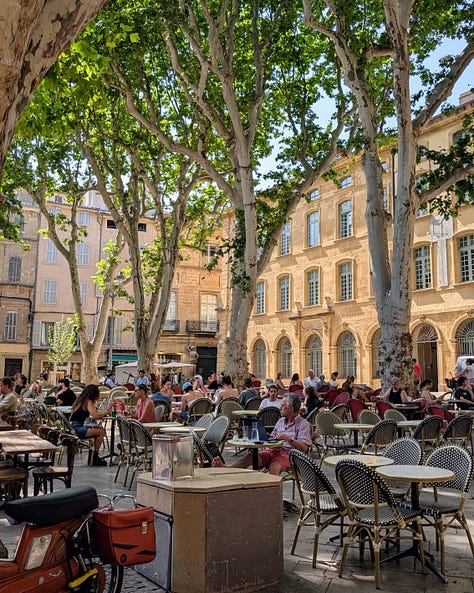
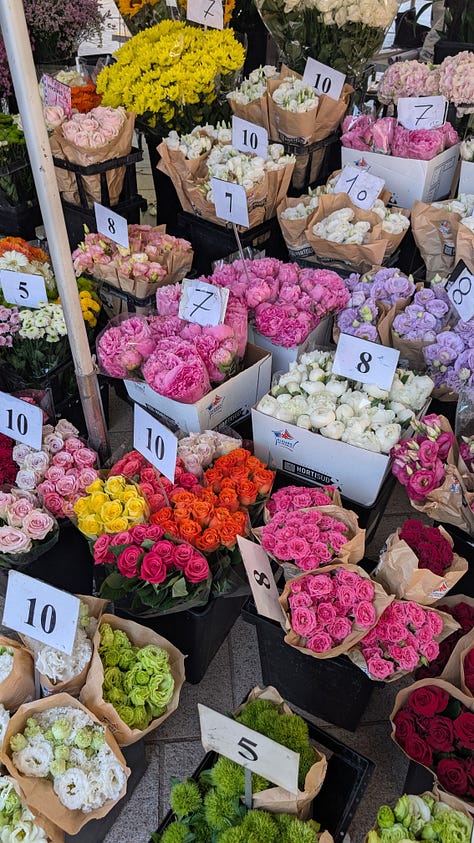

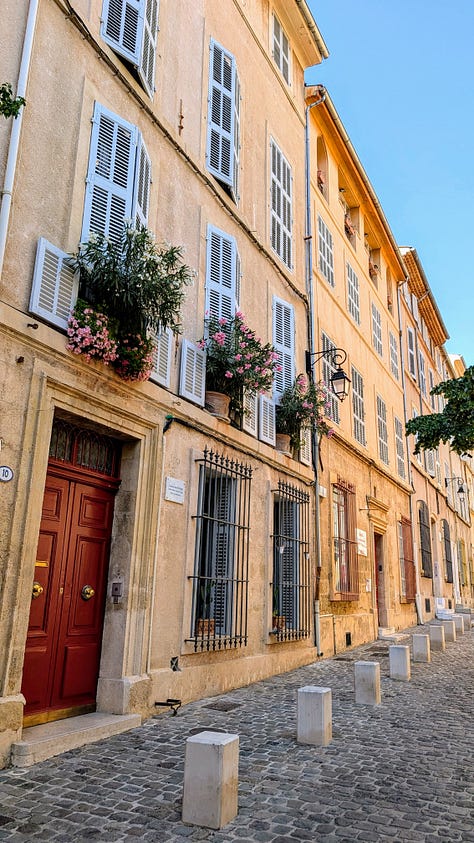
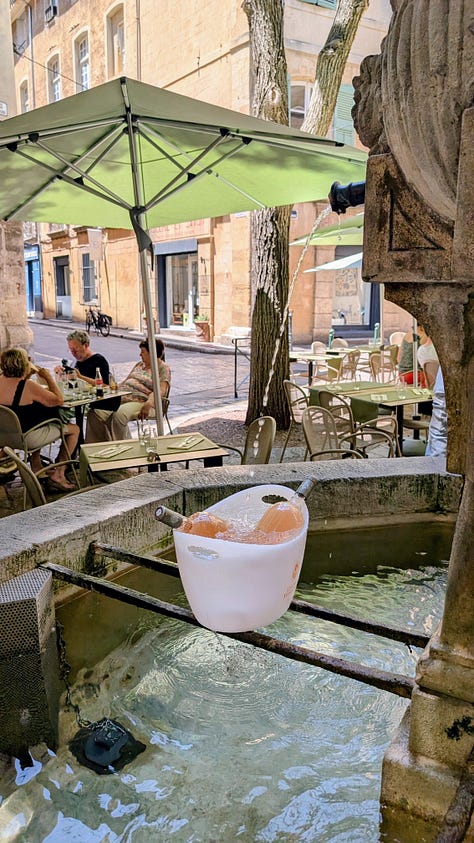
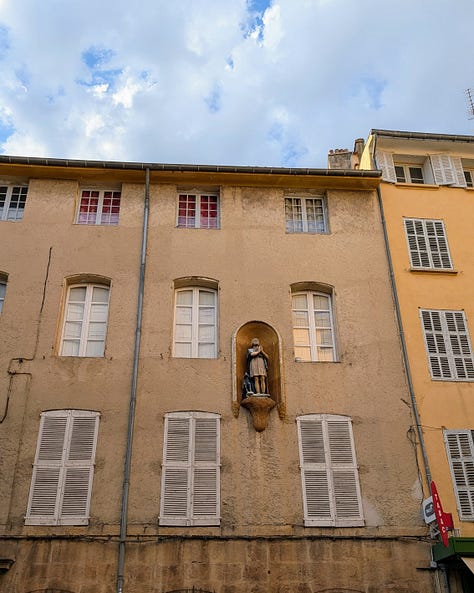
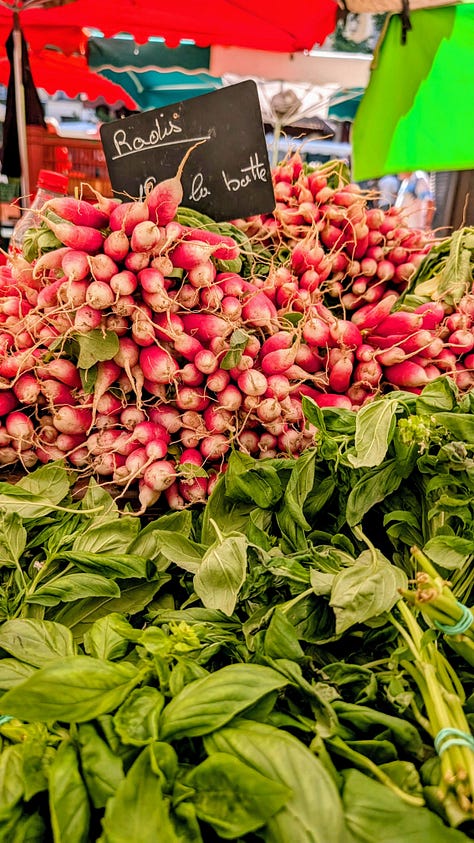
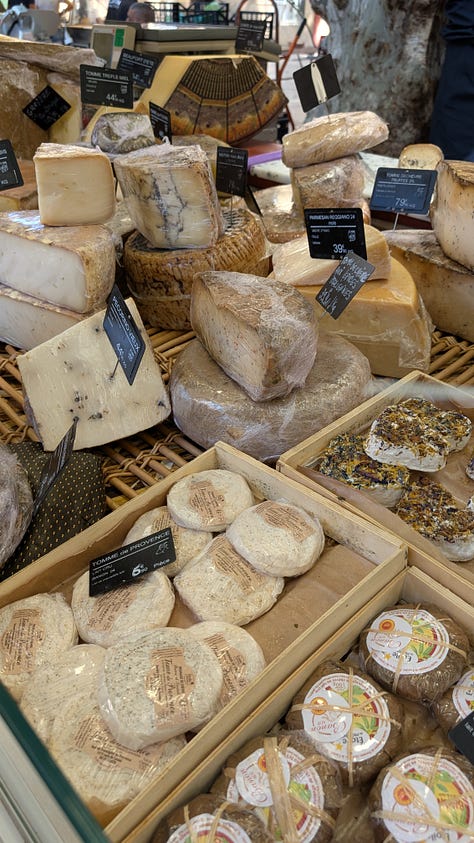
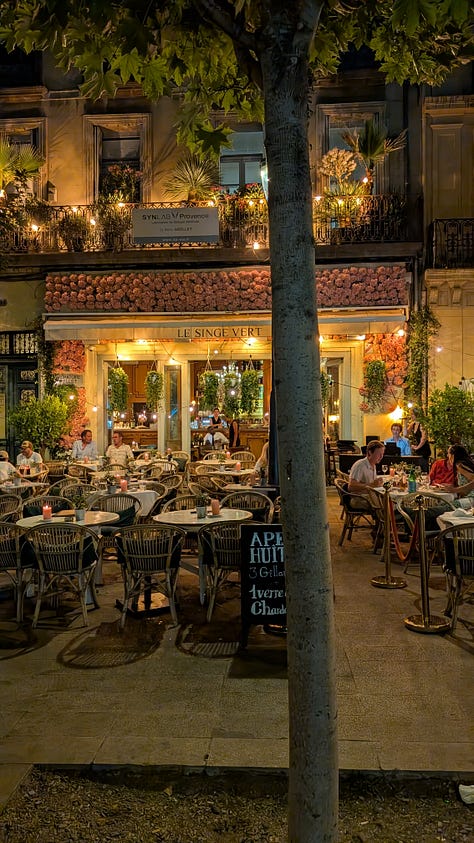
City life fills the squares, or triangles even as a cafe’s patio seating blooms outward from the public fountain where a bucket of local rosé bottles keeps cool under the flowing spigot. The markets can be found on Tuesday, Thursday, and Saturday transforming the streets with tented stalls offering towers of slim green beans and piles of thick tomatoes, while trucks and trailers display coolers with every funky cheese imaginable or golden rotisserie chickens turning on spits.
As days flow toward dusk, and the light climbs higher on the walls, the market stalls are removed and replaced with cafe tables and that spritz life. The amount of solo sitters, having a scroll and a cig with a glass of gin, was not lost on your girl with totes full of radish and cheese as I strolled by. Maybe just a quick sit.
And yet for all the action on the street and the wonderful French pastime of publicly sanctioned day drinking and people watching, I kept finding myself stopping mid-stream, and just looking up.
The light that flows down the canyons created by streets and buildings was spellbinding. The color of the pale stone seemed to come alive and vibrate against the bluest cloudless sky. I think I took the same picture outside of our apartment at least four times on different days because it kept catching my breath.
Everything was on a different timeline. Granted, it was very hot, like 95-100 degrees hot most days, but I can’t attribute my slowness to just that. And, of course, I didn’t have the pressures of daily American life to push in, but I wasn’t just there on vacation either, my time was not solely my own. It’s just: Slow has permission in that town.
While Cezanne spent most of his life in Provence, he also went to Paris. His closest clutch included the scientist Baptistin Baille and novelist Emile Zola, which formed a trio they referred to as The Inseparables. Cute, right? Spending time at the Paris Salon, meeting Monet, Manet, Degas, and Renoir in cafes had a clear impact on him, but it didn’t hold him. He always seemed to go back to Aix.
These two works are of the same landscape in Jas de Bouffan, but painted five years apart. In the 1871 painting on the right, he uses dark paints, heavier strokes that hold to form. In the 1876 paining on the left you see lighter colors, easier brushstrokes. He had taken what he learned about light from the Impressionists, and applied it to the trees in Provence.
But he wasn’t really one of them.
Around 1880, Cezanne began messing with the still life genre. Classically, pictures of objects gathered on a table were painted with realism to symbolize aspects of society. A painting might contain a gold candlestick to mean wealth, a skull to comment on death, a watch or hourglass to denote the fleetingness of life, flowers as a contemplation on beauty. Apples, not so much.
But Cezanne saw how beautiful a simple apple was in the light, how its colors danced and revealed themselves at different times of the day. Simple elegance. In common life.
And while he rejected the strict adherence to form, perspective, and rigid realism of the past, he didn’t just grab onto the messy and immediate nature of the Impressionists who worked fast to capture light’s single moment of existence in a place.
He considered. He spent days observing and allowing it to change him and how he saw the apple, until he could convey through light and color how it made him feel.
He slowed down.
At this stage he was in his 40’s. He’d had a life, dropped out of law school, found a love, made a kid, been to Paris, met people who’d challenged his mind, been rejected by his community, disappointed his father, traveled with friends, earned acclaim and scorn, and spent a lot of time with trees. All of that came to bear in the painting of some apples, which he knew would change the world.
“With an apple, I will astonish Paris.”
After years of copying classic works and being open to influence by contemporaries, Cezanne stepped finally into his own breath. He broke the rules and hierarchies of the dominant school by conveying sensation in color and light and rooting that experience in everyday objects, or everyday people: card players, his wife, a gardener. Is that why Picasso and Matisse described him as the “father to us all?”
What hit me most as I walked through the town of Aix and the exhibit in the museum, was that I wasn’t looking at a divine perspective, a creative alien brain with an untouchable gift. I was looking at a life lived, of a world noticed, and at all costs, a voice used.
That’s all. And of course, that is everything.
Below the paywall, for paid Picklers who are so sweet to support the use of this voice, tips on how to best experience the Cezanne exhibit, and the recipe for the market potatoes I made for the crew, pictured below. Join us!
Keep reading with a 7-day free trial
Subscribe to Pickle by Steph March to keep reading this post and get 7 days of free access to the full post archives.








